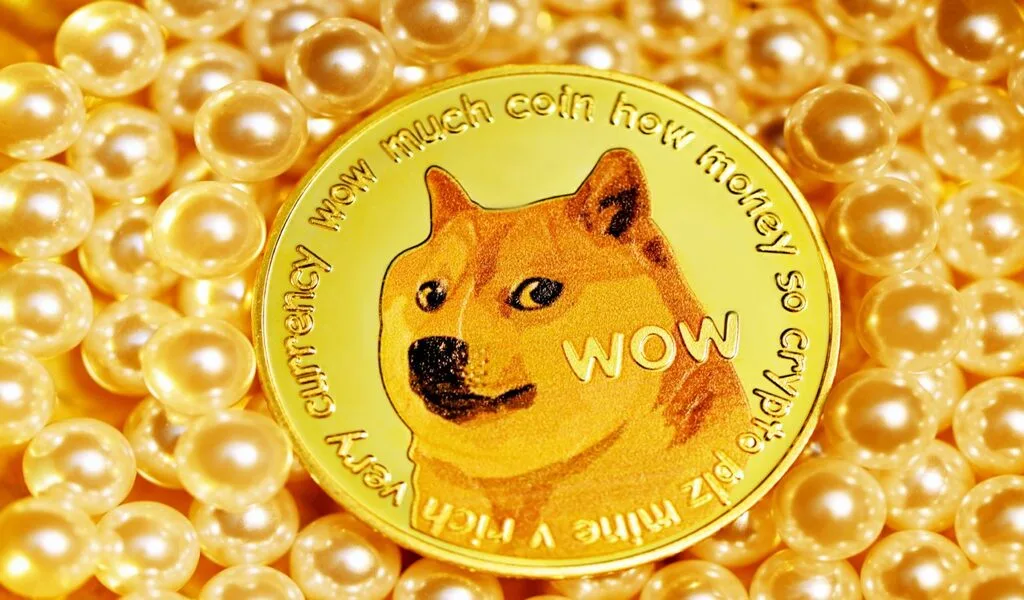Cryptocurrency
Why Australia and Other Nations Can’t Kick the Can with Crypto Regulation
An interesting article appeared in Tech Crunch recently. It argued that governments had effectively lost the ‘fight’ against cryptocurrency, and that the rise of crypto regulation was inevitable. It paid particular attention to blockchain technology in general, pointing out that it was the future of commerce and societal structure regardless of what cryptocurrency critics believe.
The opinion piece also claimed that those nations that try to delay the inevitable will get left behind. The United States came in for particular criticism, but it’s interesting that the Australian Senate rejected a wide-ranging cryptocurrency regulation bill on the same day as the think-piece was published.
Please be aware: the rejection of the bill does not make crypto illegal in Australia. You can still buy, sell and trade crypto in Australia. Moreover, Australia’s current attitude to crypto is what we would call progressive. But regulations help codify existing laws, inviting more institutions into an industry and affording certain protections to investors.
Australia, of course, is not alone in kicking the can down the road when it comes to crypto regulation. Some, like China, believe a hardline approach of an outright ban is possible, although many believe the regulation of crypto in Hong Kong gives Chinese investors access by proxy.
But the majority of advanced economies follow Australia’s blueprint of maintaining a regulatory grey area. This creates a triumvirate of problems, however. First, it pushes innovation off-shore. Second, a lack of regulation means treasuries lose out on taxation. Third, a lack of regulation means fewer protections for users overall.

Crypto Trading: A Comparison with Forex
The current value of global cryptocurrencies is somewhere in the region of $1 trillion (AUD 1.57 trillion). Around $110 billion is traded daily. Compared to the forex (foreign exchange) markets, crypto pales in comparison. Daily trade volumes of forex are measured in trillions of dollars.
Forex is the world’s biggest financial market, and many Australians confidently trade forex daily on regulated online trading platforms. There is a trust in the idea of a central authority in forex that brings in institutional-grade investors and gradual traders alike. Crypto is not there yet, and clear regulation is one of the reasons.
Forex daily trading volume is now over seven TRILLION dollars every trading day. pic.twitter.com/5t5Rlzbhda
— FloridaHERS (@SusanBrownFL) March 8, 2023
The reason we cite forex as a comparison is two-fold. First, it shows the kind of ambitious figures that proponents of the crypto industry believe they can aspire to. But more importantly, it makes a kind of mockery of the criticism of crypto as worthless as a virtual asset.
When those traders trade trillions of dollars in forex each day, they don’t own physical dollars. It’s virtual money (technically speaking) traded via a multitude of different contracts and derivatives. In the trading arena, there’s not much difference between making a short trade on ETH/BTC compared to making one on AUD/USD. The main difference is that the former has no central authority.

The Global Push for Crypto Regulation
In 2023, we see some efforts for international consensus and co-operation on cryptocurrencies. Many believe that governments are lagging behind innovation. As we mentioned, crypto could one day challenge forex as the world’s most important trading market, but, in a sense, that’s also the moot point, and it only looks at crypto as financial products.
Consider what Chainlink is doing in partnership with Swift to facilitate international payments; or how Ticketmaster is using NFTs to fundamentally change the event ticketing industry; or how Bosch is partnering with Fetch to combine AI with and the IoT. These are just a few of the huge crypto-blockchain projects announced recently, and many more will come.
11,500+ Banks are now ready to be blockchain enabled using their current Swift infra with Chainlink CCIP.
Swift Successfully Demonstrates Global Banks Can Transact With Multiple Blockchains Using Chainlink CCIP
Read more ⬇️ https://t.co/gb8hw9UnVA via @ChainlinkToday
— chrisbarrett.x (@ChrisBarrett) September 1, 2023
The point, as such, is that governments are still viewing crypto as financial products only. But crypto tokens are but the tokenised assets of the underlying projects. In a sense, you can view cryptocurrency to be equivalent to buying stocks in a company. Those stocks will rise in value when the products that the company builds become profitable.

Crypto, as a whole, isn’t quite there yet, but many believe that it is just around the corner. As for products, we could point to anything from the fictionalization of online data via the Jasmy crypto project to the creation of a blockchain smartphone by the Solana project. These projects offer real products and services, but they do so in the face of a global regulatory climate that is difficult.
The overall argument we want to make is that regulation would be a win-win situation for governments and the crypto industry. The innovation is happening in spite of regulatory uncertainty, but the inevitable will occur.
Governments can act to harmonize the sector, making it easier to collect capital gains taxes, protect users from bad actors, and allow crypto to grow their economies. It is myopic to stick one’s head in the sand and claim that crypto will go away if you ignore it. It is already too entrenched within the global economy, and it has only displayed a small part of what its impact will be in the coming years.

Cryptocurrency
7 Main Benefits of Software that Deals with Crypto Tax, What It Is, How It Works?

As we know more people use digital money. It is hard to keep track of it. We need a report on how much you’ve made or lost for taxes. Crypto tax software is a special tool. It is made to make this easier. It helps you keep track of how much money you’ve made or lost from digital money. This also figures out how much tax you need to pay. It also tells you the rules you need to follow about taxes. Over all this software helps you do your taxes right.
How Does Crypto Tax Software Work?
Crypto tax software connects different places where you keep and trade your digital money. Here’s a simple way to understand.
Step 1. Bring in Your Data: People connect their digital money accounts to the software. The software collects details from all transactions. It can calculate things like buying and selling. It also deals with trading and moving money between wallets. This happens by linking accounts. There are special connections with all these transactions.
Step 2. Put It All Together: The software puts together all the information from different places. This makes sure nothing is missed. Everything is clear about what happened with the digital money.
Step 3. Sort Out the Transactions: It organizes transactions into groups. For example the ones that need to be taxed and the ones that don’t. The software uses the right tax rules for each group. This helps figure out how much tax is owed.
Step 4. Count the Gains and Losses: It can compare how much was spent to buy digital money with how much was made selling it. This software figures out if there was a gain or a loss for each transaction. This is really important to know how much tax needs to be paid.
Step 5. Make Tax Reports: The software creates detailed reports for taxes. For example the Form 8949 and Schedule D for people in the U.S. These reports show all the transactions. These all need to be taxed. This makes it easy to show tax authorities exactly what happened with the digital money.
7 Main Benefits of Using Crypto Tax Software
Accurate and Quick: Crypto tax software helps make sure your tax calculations are correct. It can lead to mistakes if you do it by hand lead to mistakes. The software does this automatically. So there are fewer mistakes. This is important when IRS watch crypto transactions closely.
Saves Time: Calculating crypto taxes by hand takes a lot of time. The software collects and organizes all the transactions for you. So you can do other things. This is really helpful for busy people. This saves the time that they would spend keeping records.
Easy Reporting: Tax reports can be hard without the right tools. Crypto tax software makes it easy. It can clear and simple reports that follow tax rules. You can use these reports with tax software. Or you can share them with tax experts. This is especially useful during tax season. In this you usually need everything to be correct and fast.
Following Tax Rules: Tax rules for cryptocurrencies keep changing. Crypto tax software stays updated with the latest rules. Make sure you follow them. This helps you avoid penalties and fines. It also saves you from making big mistakes. This software helps you manage your taxes confidently.
Help with Audits: During audit you need to have an organized record of all your crypto transactions. Crypto tax software keeps detailed records. This makes it easier to answer questions and give information to tax authorities. This support can be really helpful. It gives you a great peace of mind.
Supports Many Exchanges and Wallets: People who use crypto may have accounts in different places. Crypto tax software connects with many exchanges and wallets. It puts all transaction data in one place. This means you don’t have to enter data by hand. Great right? And no transaction is missed. It gives a clear view of all your crypto activities.
Tax Saving Tips: Well some advanced crypto tax software helps you find ways to save on taxes. It can be selling assets at a loss to reduce the tax you owe. These features can help you save a lot on taxes. So this software is a worth investment.
Shortly,
Keeping track of cryptocurrency taxes is really important for investors and traders. Crypto tax software helps make this job easier. It makes sure everything is accurate and follows the rules. It does this by automatic features. It gathers, organizes, and reports your transactions. This saves you a lot of time and effort.
The software also helps during audits. It also works with different exchanges. Moreover it gives you tips on saving money on taxes. This makes it a must-have tool for anyone using cryptocurrency. The right software helps you handle your crypto taxes confidently. With this you can make doing your taxes simpler. In your spare time you can focus on making the most of your investments!
SEE ALSO: Bitcoin Hits Two-Year Peak Of Over $56,000 Amidst Market Surge
Cryptocurrency
The Dogecoin Revolution: How a Joke Became a Serious Cryptocurrency

Dogecoin, initially created as a joke, has evolved into a significant player in the cryptocurrency market. What began as a lighthearted response to the burgeoning cryptocurrency landscape has transformed into a digital asset with a dedicated community and substantial market value. This article delves into Dogecoin’s journey from a meme to a serious cryptocurrency, exploring its origins, community impact, technological features, and cultural significance. For those looking to understand the intricacies of this transformation, seeking guidance from an investment education firm like BitAMG can provide valuable insights.
The Genesis of Dogecoin
Dogecoin was launched on December 6, 2013, by software engineers Billy Markus and Jackson Palmer. Markus, an IBM engineer, and Palmer, an Adobe product manager, sought to create a fun and more approachable cryptocurrency. They chose the Shiba Inu dog from the popular “Doge” meme as the logo, emphasizing the coin’s humorous nature. Unlike Bitcoin, which was seen as a complex and serious investment, Dogecoin aimed to be more accessible and user-friendly.
Initially, Dogecoin was not intended to compete with Bitcoin or other established cryptocurrencies. Its primary purpose was to provide a light-hearted alternative, fostering an inclusive and engaging environment for newcomers to the crypto world.
The Role of Community in Dogecoin’s Development
Dogecoin’s success is largely attributed to its vibrant and dedicated community. The Dogecoin community is known for its strong sense of camaraderie and enthusiasm, which has played a crucial role in the coin’s development and adoption.
One notable example of community-driven initiatives is the Dogecoin sponsorship of the Jamaican bobsled team in 2014, raising $50,000 to help the team compete in the Sochi Winter Olympics. Another example is the “Doge4Water” campaign, which raised $30,000 to build clean water wells in Kenya. These initiatives highlight the community’s commitment to charitable causes and the power of collective action.
Dogecoin’s Unique Features and Technology
Dogecoin’s technology, while based on the same principles as other cryptocurrencies, has distinct characteristics that set it apart. Dogecoin is a decentralized, peer-to-peer digital currency that uses the Scrypt algorithm, unlike Bitcoin’s SHA-256. This allows for faster transaction times and lower fees.
One of Dogecoin’s most appealing features is its inflationary supply model. Unlike Bitcoin, which has a capped supply of 21 million coins, Dogecoin has no maximum supply limit. This ensures continuous mining rewards and a steady supply of new coins, encouraging spending and circulation rather than hoarding.
Additionally, Dogecoin’s block time is only one minute, compared to Bitcoin’s ten minutes. This results in quicker transaction confirmations, making Dogecoin more suitable for everyday transactions.
Dogecoin’s Rise to Prominence
Several key events have propelled Dogecoin into the mainstream spotlight. One of the most significant factors has been the endorsement and support from high-profile celebrities and influencers, most notably Elon Musk. Musk’s tweets and public statements about Dogecoin have often led to significant price surges and increased public interest.
In 2021, Dogecoin’s market capitalization soared, reaching an all-time high of over $88 billion in May. This rise was fueled by a combination of social media hype, celebrity endorsements, and increased trading activity on platforms like Robinhood and Coinbase.
The widespread media coverage and community-driven marketing efforts have also played a crucial role in Dogecoin’s rise. The “Doge Day” event on April 20, 2021, aimed to push Dogecoin’s price to new heights, demonstrating the power of collective action and social media influence.
The Transition to Seriousness
Dogecoin’s transition from a joke to a serious cryptocurrency can be attributed to several factors. Firstly, the coin’s growing adoption and integration into mainstream financial services have legitimized its use as a viable digital asset. Companies like Newegg, the Dallas Mavericks, and Kronos have started accepting Dogecoin as a form of payment, showcasing its utility in real-world transactions.
Secondly, the increasing attention from institutional investors has added credibility to Dogecoin. While initially dismissed as a speculative asset, the involvement of major investment firms and the listing on prominent cryptocurrency exchanges have validated Dogecoin’s potential as an investment.
Lastly, the community’s efforts to promote charitable causes and positive social impact have reshaped Dogecoin’s image. The coin is no longer seen solely as a meme but as a tool for philanthropy and community building.
Dogecoin’s Impact on Cryptocurrency Culture
Dogecoin’s influence extends beyond its market value; it has significantly impacted the broader cryptocurrency culture. Its success has challenged the notion that a cryptocurrency must be serious or technologically superior to succeed. Dogecoin’s rise has demonstrated the importance of community engagement, accessibility, and fun in driving adoption.
Moreover, Dogecoin has paved the way for other meme-based and community-driven cryptocurrencies, such as Shiba Inu (SHIB) and SafeMoon. These projects have followed in Dogecoin’s footsteps, leveraging humor and social media to build their communities and gain traction.
Dogecoin’s philanthropic initiatives have also inspired other cryptocurrency projects to focus on charitable giving and social impact. The emphasis on using cryptocurrency for good has resonated with many and has helped to foster a more positive and inclusive crypto culture.
Conclusion
Dogecoin’s journey from a joke to a serious cryptocurrency is a testament to the power of community, innovation, and accessibility. What started as a lighthearted experiment has evolved into a significant player in the digital currency landscape, challenging traditional perceptions of value and utility. As Dogecoin continues to gain traction and legitimacy, its story serves as a reminder of the diverse and dynamic nature of the cryptocurrency world. Whether as a tool for charitable causes, a medium of exchange, or a speculative investment, Dogecoin has carved out its unique niche, proving that sometimes, even the most unlikely contenders can make a lasting impact.
SEE ALSO: Bitcoin Hits Two-Year Peak Of Over $56,000 Amidst Market Surge
Cryptocurrency
Ethereum Essentials: Essential Tips for Successful Crypto Investment

Ethereum, the second-largest cryptocurrency by way of market capitalization, has garnered big interest and hobby from buyers worldwide. However, navigating the Ethereum marketplace requires a stable information of its essentials and strategic funding technique. In this text, we’re going to delve into the vital suggestions for successful crypto investment in Ethereum. Go https://ethereum-code.me now and learn some game changing tips and tricks to make solid investment decisions. Connect with an educational expert right now!
Understand Ethereum’s Technology and Ecosystem:
Before diving into Ethereum investment, it is vital to understand the underlying generation and the atmosphere it supports. Ethereum is not only a digital foreign money, but a decentralized platform that enables builders to build and install smart contracts and decentralized programs (DApps). Understanding Ethereum’s technical fundamentals, consisting of its consensus mechanism (presently transitioning from Proof of Work to Proof of Stake with Ethereum 2.0), scalability answers, and upcoming upgrades, such as Ethereum 2.Zero, is vital for making knowledgeable funding decisions.
Diversify Your Portfolio:
Diversification is a key principle of a hit investment, and the equal applies to making an investment in Ethereum. While Ethereum holds enormous capability for growth, it is critical now not to put all your eggs in a single basket. Consider diversifying your cryptocurrency portfolio across more than one assets, consisting of Bitcoin, other primary cryptocurrencies, and promising altcoins. Diversification facilitates spread hazard and decreases the effect of volatility in any unmarried asset on your standard funding portfolio.
Stay Informed About Market Trends and Developments:
The cryptocurrency market is notably dynamic and causes rapid modifications in developments and tendencies. Staying knowledgeable approximately marketplace traits, news, and traits in the Ethereum surroundings is essential for making knowledgeable funding choices. Follow reliable cryptocurrency news assets, join Ethereum-centered boards and groups, and engage with industry experts to live updated on the ultra-modern tendencies, upcoming enhancements, partnerships, and regulatory adjustments that could affect Ethereum’s rate and market dynamics.
Keep an Eye on Network Activity and Adoption:
Monitoring Ethereum’s community hobby and adoption metrics can offer valuable insights into its growth and ability rate moves. Metrics along with daily transaction extent, lively addresses, decentralized finance (DeFi) hobby, and developer pastime at the Ethereum blockchain can help gauge the community’s health and adoption developments. Increasing community interest and adoption imply developing demand and application for Ethereum, which may additionally definitely impact its price over the years.
Consider Long-Term Investment:
While short-term trading and hypotheses can yield income, don’t forget adopting a long-time period investment method for Ethereum. Ethereum’s capacity for long-time period growth is supported by its robust era, massive adoption, and increasing atmosphere of DApps and decentralized finance (DeFi) tasks. By taking a long-time period attitude and preserving onto your Ethereum funding via marketplace fluctuations, you can enjoy the capacity appreciation in fee over time and capitalize at the increase of the Ethereum environment.
Practice Risk Management:
As with any investment, it’s vital to practice effective hazard management while investing in Ethereum. Set clean investment goals, set up chance tolerance levels, and diversify your investment portfolio to mitigate capacity losses. Additionally, consider imposing chance management strategies which includes setting prevent-loss orders, carrying out thorough studies before making funding decisions, and fending off making an investment more than you could have the funds for to lose.
Conclusion:
Investing in Ethereum gives huge opportunities for investors looking for exposure to the cryptocurrency market. By information Ethereum’s technology and ecosystem, diversifying your portfolio, staying knowledgeable about market tendencies and developments, tracking network hobby and adoption, considering long-term funding, and working towards risk management, you may function yourself for a hit crypto investment in Ethereum. As Ethereum keeps adapting and innovating, it stays a cornerstone of the cryptocurrency atmosphere, providing potential for lengthy-term growth and cost creation for traders.
SEE ALSO: US Prosecutors Accuse High-Profile Crypto Firms Of $1 Billion Investor Fraud
-

 News4 years ago
News4 years agoLet’s Know About Ultra High Net Worth Individual
-
Entertainment2 years ago
Mabelle Prior: The Voice of Hope, Resilience, and Diversity Inspiring Generations
-
News11 years ago
Enviromental Groups Tell Mekong Leaders Lao Dam Evaluation Process Flawed
-

 Health4 years ago
Health4 years agoHow Much Ivermectin Should You Take?
-

 Tech3 years ago
Tech3 years agoTop Forex Brokers of 2023: Reviews and Analysis for Successful Trading
-

 Lifestyles3 years ago
Lifestyles3 years agoAries Soulmate Signs
-

 Entertainment3 years ago
Entertainment3 years agoWhat Should I Do If Disney Plus Keeps Logging Me Out of TV?
-

 Health3 years ago
Health3 years agoCan I Buy Ivermectin Without A Prescription in the USA?